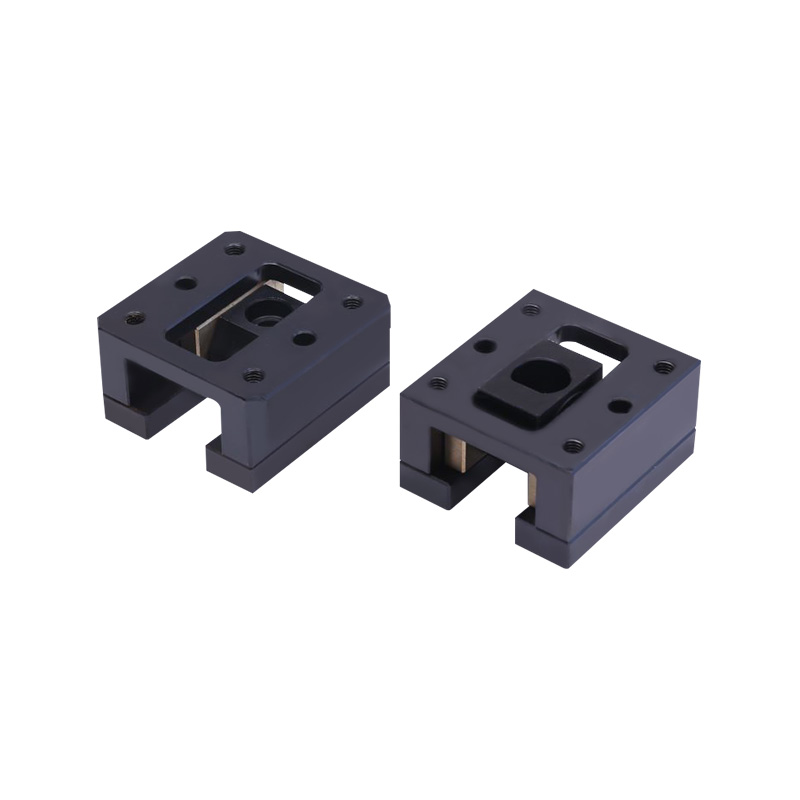Email: [email protected]
Precision Positioning Block Materials and Surface Treatments That Ensure Long-Term Durability and Precision
In the field of mold manufacturing and industrial production, ensuring the longevity and accuracy of key components is essential. Among these components, the Precision Positioning Block plays a critical role in maintaining alignment and stability during repeated operations. Selecting appropriate materials and applying effective surface treatments are fundamental steps to guarantee both performance and durability. This article explores the considerations for material selection, surface treatment methods, and the complementary role of the Mold Safety Lock in achieving reliable and precise mold operations.

Material Selection for Precision Positioning Blocks
The choice of material for a Precision Positioning Block is a critical factor in determining its wear resistance, dimensional stability, and overall lifespan. Commonly used materials include high-grade alloy steels, tool steels, and heat-treated stainless steels. Each material brings specific advantages: tool steels provide high hardness and resistance to deformation, while stainless steels offer corrosion resistance in humid or chemically active environments.
Heat treatment is another important consideration. Processes such as quenching and tempering can significantly enhance hardness and reduce the risk of surface wear. For components like positioning blocks, which are subject to repeated mechanical contact, a stable microstructure achieved through careful heat treatment ensures the block maintains its precise dimensions over time.
Surface Treatments for Enhanced Durability
Surface treatments complement material selection by providing additional layers of protection and performance enhancement. Common methods include nitriding, chrome plating, and surface polishing. Nitriding increases surface hardness and improves fatigue resistance without significantly affecting the internal toughness of the block. Chrome plating, meanwhile, enhances corrosion resistance and provides a smooth surface that less friction during operation.
Polishing and fine grinding of the surface also contribute to precision. A smooth contact surface reduces the wear between the Precision Positioning Block and mating components, ensuring consistent alignment in high-frequency mold operations. Proper surface treatment not only extends the service life of the block but also maintains the dimensional accuracy required for high-quality production.
Integration with Mold Safety Mechanisms
While the Precision Positioning Block ensures alignment and stability, the Mold Safety Lock serves as an additional safeguard against unexpected movements or operational hazards. The safety lock provides a secure locking mechanism that keeps the mold components in place during maintenance or when the mold is idle. This feature is particularly important in reducing the risk of accidents and preventing misalignment that could compromise production quality.
The integration of these two components enhances overall operational safety. A Precision Positioning Block without a proper safety lock may still achieve alignment under normal conditions, but the addition of a Mold Safety Lock ensures that alignment is maintained even under irregular forces or accidental impacts. This combination is widely recognized in mold design for improving reliability and reducing downtime caused by misalignment or mechanical failures.
Maintenance Considerations
Long-term durability of Precision Positioning Blocks and Mold Safety Locks requires a consistent maintenance routine. Regular inspection for wear, lubrication of moving surfaces, and periodic cleaning of debris are essential practices. Surface wear or contamination can advance to subtle misalignments that affect the final product quality. Addressing these issues promptly prevents more significant problems and extends the life of the components.
Lubrication should be applied selectively to avoid excessive accumulation that could attract dust or residues. In environments with high humidity or exposure to corrosive substances, corrosion inhibitors or protective coatings may also be considered. These maintenance measures, when combined with proper material choice and surface treatments, form a comprehensive strategy for ensuring reliable, precise mold operations over extended periods.
Ensuring precision and durability in mold operations requires careful attention to both material selection and surface treatment of key components like the Precision Positioning Block. When combined with the protective function of the Mold Safety Lock, these measures provide a reliable system that maintains alignment, less wear, and supports long-term operational stability. By adopting appropriate materials, surface treatments, and maintenance practices, manufacturers can achieve consistent performance and reduce the risk of operational errors, supporting productivity and quality in demanding industrial environments.
Get in touch
Related recommendations
